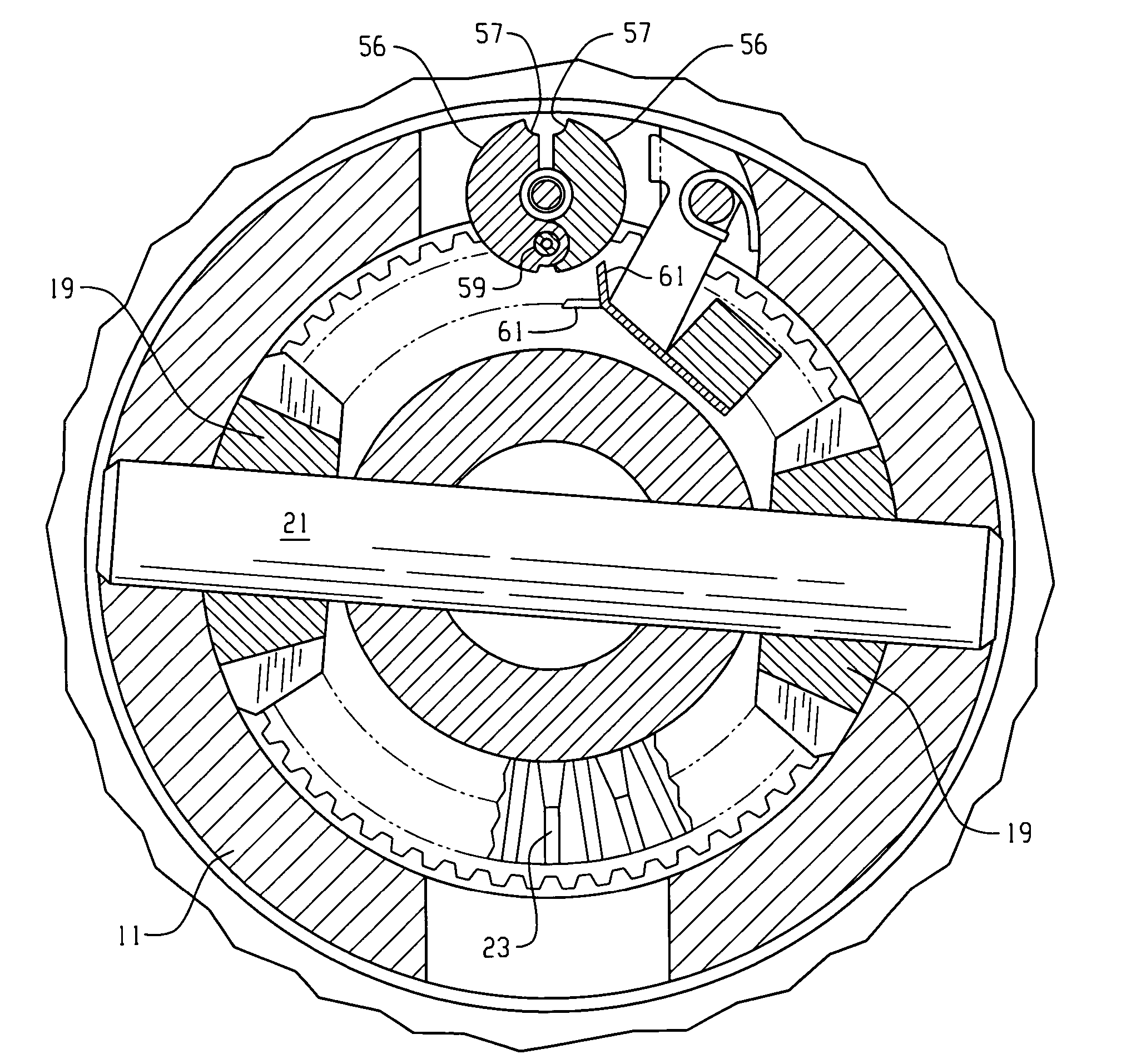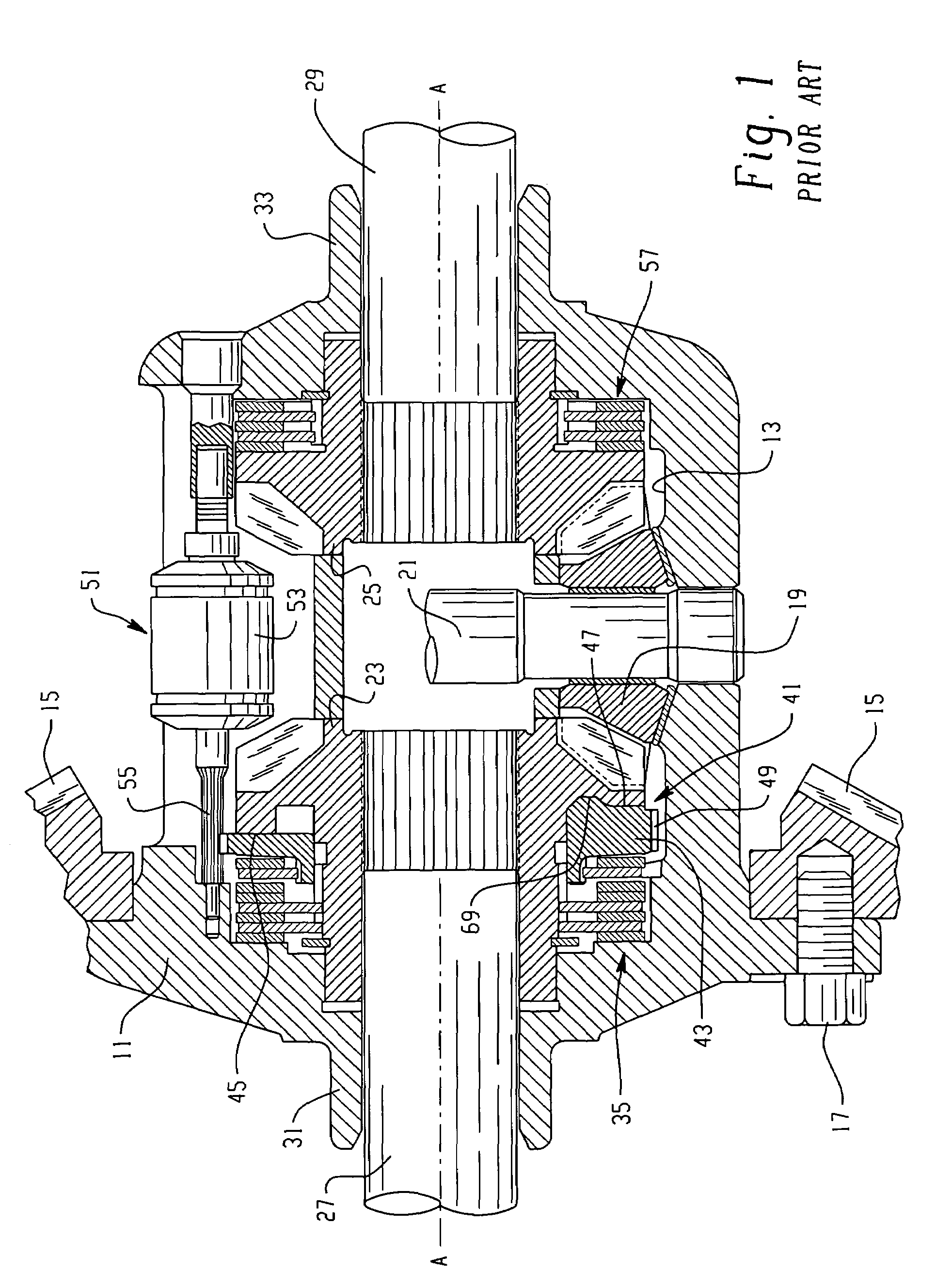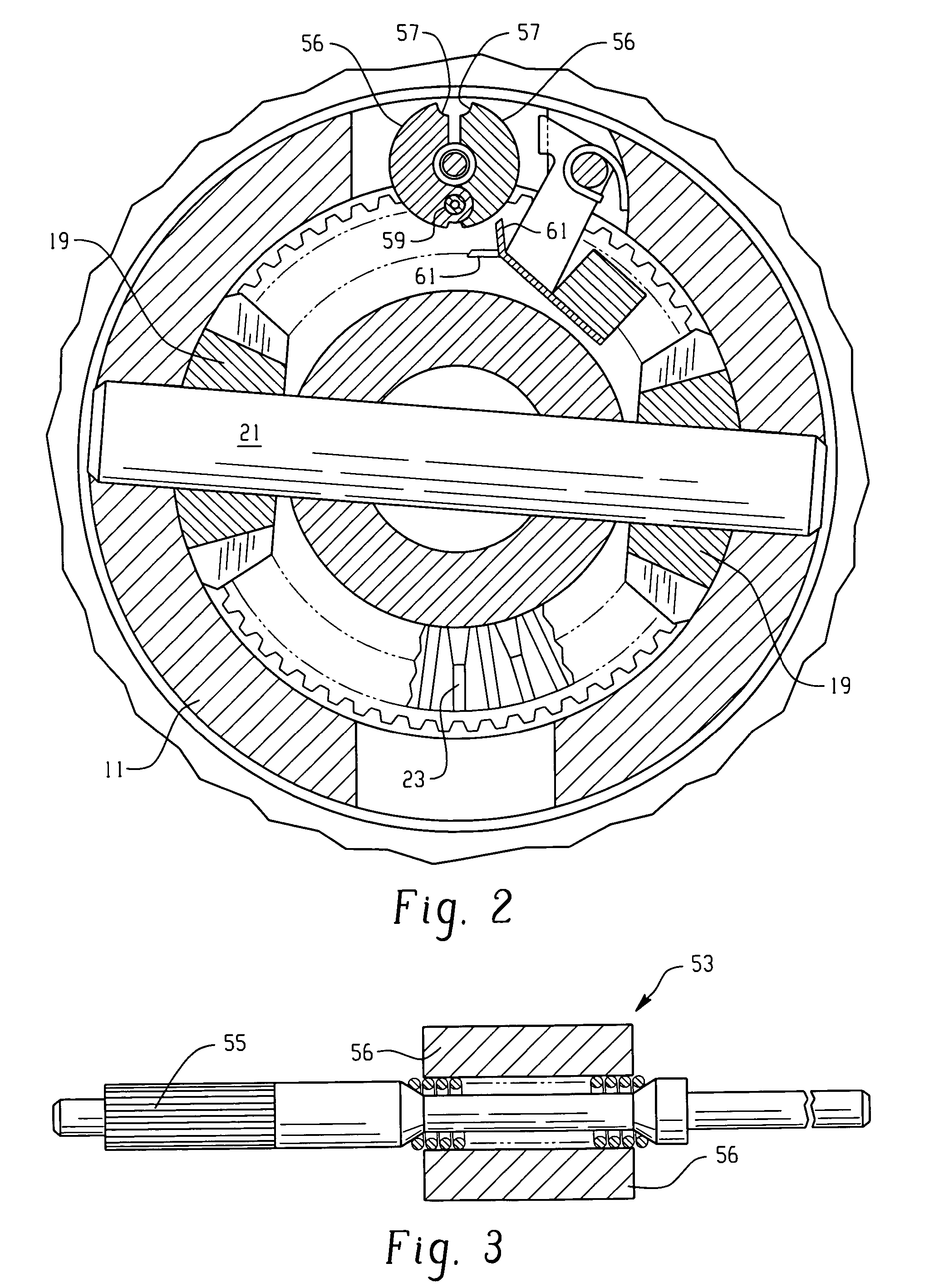Mechanical locking differential lockout mechanism
a technology of mechanical locking differential and lockout mechanism, which is applied in the direction of mechanical equipment, gearing, transportation and packaging, etc., can solve the problems of unsatisfactory performance of conventional locking differential
- Summary
- Abstract
- Description
- Claims
- Application Information
AI Technical Summary
Benefits of technology
Problems solved by technology
Method used
Image
Examples
Embodiment Construction
[0022]Referring now to the drawings, which are not intended to limit the invention, FIG. 1 is an axial cross-section of a locking differential gear mechanism of the type that may advantageously utilize the present invention. The overall construction and operation of the locking differential shown in FIG. 1 is already well known to those skilled in the art, and is illustrated and described in greater detail in the above-incorporated patents. The differential gear mechanism as shown in FIG. 1 (“Prior Art”) includes a gear case 11 that defines therein a gear chamber, generally designated 13. Torque input to the locking differential is typically by means of an input gear 15 (shown only in fragmentary view in FIG. 1). The input gear 15 (also referred to as a “ring gear”) is intended to be in toothed engagement with an input pinion gear (not shown in FIG. 1), which receives input drive torque from the vehicle driveline. The input gear 15 may be attached to the gear case 11 by means of a p...
PUM
 Login to View More
Login to View More Abstract
Description
Claims
Application Information
 Login to View More
Login to View More - R&D
- Intellectual Property
- Life Sciences
- Materials
- Tech Scout
- Unparalleled Data Quality
- Higher Quality Content
- 60% Fewer Hallucinations
Browse by: Latest US Patents, China's latest patents, Technical Efficacy Thesaurus, Application Domain, Technology Topic, Popular Technical Reports.
© 2025 PatSnap. All rights reserved.Legal|Privacy policy|Modern Slavery Act Transparency Statement|Sitemap|About US| Contact US: help@patsnap.com



